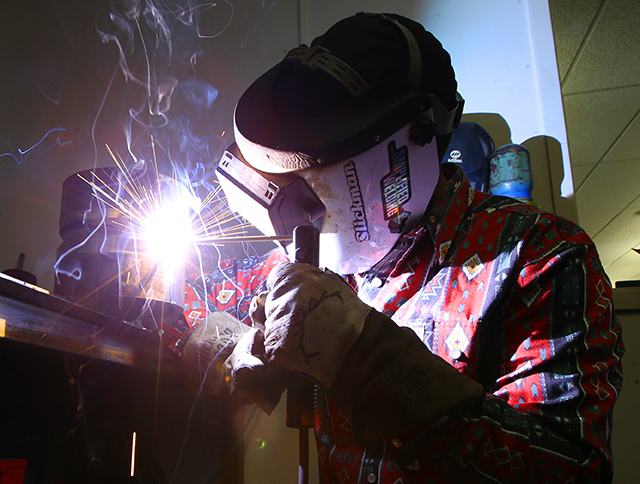Dori the beagle shakes up sheepherding
Published 7:00 am Tuesday, April 11, 2023

- Dori, a beagle, won a title after competing in Battle Ground, Wash. Here she poses with her trainer, Sheryl Evans (left) and judge Nancy Ward.
For more than 30 years, Sheryl Evans has been competing with her animals in all types of events, from obedience, agility and traditional dog shows to more complicated herding competitions.
In 2021, the Redmond resident turned up for a sheepherding event in Battle Ground, Washington, with a strange partner: A 9-month-old beagle named Dori.
Their competitors were all from traditional herding breeds — collies, Australian and German shepherds, sheepdogs. But there was Dori with her big beagle nose, her floppy ears and yellow eyes, moving in circles around the sheep and pushing them through panels while listening intently to Evans’ commands.
“I’d never seen anything like it,” said Nancy Ward, who has judged herding trials across the U.S. and Canada since 2007. “To be honest, I didn’t think Dori would even be allowed to compete.”
Once it was clear she could enter, Dori outpaced many of her rivals to earn a passing grade and a title from the American Herding Breed Association. The title officially denoted her a junior herding dog. Dori became the first beagle to earn the title in the organization’s recorded history.
The accomplishment stunned Rusty Jeffers, Ohio-based president of the AHBA.
“We’ve had about 20,000 dogs earn titles of some kind and she is the only beagle,” said Jeffers. “It’s a far, far outlier — something that hasn’t happened before.”
Training up
Evans, 70, lives on an acreage alongside U.S. Highway 97 just north of Redmond. She renovated an old barn on the property and turned it into an indoor training ground for her animals. Its walls are now decorated with endless ribbons, plaques and photos commemorating Evans’ successes in a variety of disciplines with numerous dogs. A small flock of sheep grazes nearby in a pasture dotted with fences and obstacles, providing yet another training ground for her canines to work on their skills.
Evans began training dogs in the mid-1990s. She started with a pamphlet that came in a bag of Purina dog food, which helped her teach her dog a few basic commands.
After Evans saw some progress, and how training strengthened her connection with her animals, she decided to take it more seriously. Around 1997 she brought her German shepherd to Lori Nickerson, a well-regarded dog trainer in Redmond for decades. Nickerson noticed her interest and commitment, said Evans, and told her to consider entering obedience contests. Success in those contests led to success in more complicated agility events. Agility then led to sheepherding, now a decades-long passion.
Evans said her partnership with the still-young Dori, now 2, is one of the highlights of her career.
“Dori is like a German shepherd in beagle clothes,” said Evans.
The goal during a herding test or trial is for a dog to control but not chase the livestock. Beagles are hunting dogs, so it should be easy to get them interested in other animals — but very difficult to stop them from chasing. That’s where Evans’ training skills get put to the test.
“A lot of herding is the handler,” said Ward, who judges herding trials for both the American Kennel Club and the American Herding Breeds Association. “You’ve got the sheep moving, the dog moving and you moving all at the same time. It’s by far the most difficult canine sport.”
Dori has done what no beagle has done before: earned her junior herding dog title. A titled dog must show herding instincts, the ability to move and stop sheep and push them through set panels. Should she continue, Dori would have to progress through three more levels: started, intermediate and advanced.
At each level, the demands on the dog become more intense, and the partnership with the trainer is tested. For an advanced herding dog, the trainer does not follow the dog into the field. It must know what to do by listening to whistles or calls, reading body language and understanding the task.
“The dog has to read you and do some advanced level thinking on its own,” said Jeffers. “The trainer can’t micromanage.”
Evans said it will be difficult, but not impossible.
“If any beagle could do it, Dori could,” she said. “It’s just her personality and nature. She likes to do things.”
A perfect match
They first met in Tennessee, where Dori was bred.
She wasn’t Evans’ first choice. The original plan was to train up another German shepherd, but the two matings Evans was interested in both failed to produce pups. She went to Plan C and reached out to an online friend who she knew just had a litter of beagles. She nicknamed the smallest one “yellow dog” and claimed her for her own.
“(The breeder) told me she was great,” said Evans. “She had an off switch but she’s still game for stuff.”
According to Evans, the pair connected immediately. And over the past two years, they have only gotten closer.
“The more training and teaching of stuff, even tricks, you do build a better relationship with them,” said Evans.
Once back on the the farm in Redmond, their bond grew tighter. Dori was surrounded by the sheep and the dogs that worked them. Evans noticed Dori noticing the livestock and, having trained more traditional herding dogs before, knew what to do.
“All the sudden she was just interested in them,” said Evans. “I thought, well, we’ll just see what she can do.”
Beagles are hound dogs. Historically, they were used mostly to track and flush small game such as rabbits. Many were trained to do it in a circular fashion, in order to drive the rabbits back toward the hunters rather than scare them away.
Those genetic dispositions are still strong in Dori and can act in her favor for herding sheep. Still, she is often led around a pasture by her powerful black nose, which she points toward the ground to pull in the slightest scents.
That nose may prove the biggest hurdle to Dori’s rise through the sheepherding ranks, said Evans. Her sniffer is just too strong for her own good. It brings in too much interesting information, which can cause Dori to lose focus on the task at hand.
“Herding isn’t probably a natural, intrinsic activity for her,” said Evans. “That nose is probably more rewarding.”
But they continue to practice. And Evans said the duo have only just begun their competitive career. Dori is not yet 3 years old, so there’s plenty of time to layer on additional skills.
Evans said she’ll let the dog lead the way. If she remains interested in herding, Evans said the duo will go as far as they can, breaking beagle barriers every step of the way. If Dori’s nose turns back toward the skills she’s been bred for over generations — like tracking and hunting — Evans said they may compete in those instead.
“I’m not totally sure she’ll be able to do the started level (of sheepherding),” said Evans. “But if she doesn’t, it doesn’t matter. I’ll keep at it as long as she’s interested. If she doesn’t like it, we’ll try something else.”
For now, the duo is aiming for a summer of herding sheep. And Evans said she won’t underestimate what Dori can accomplish.
“She’s not your average beagle, I don’t think,” she said.





